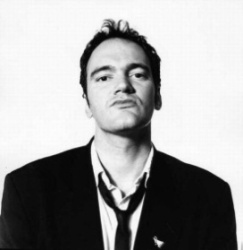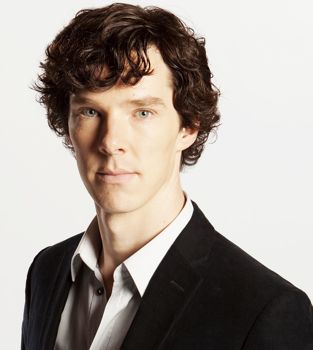Методическое пособие по практике основного иностранного языка (английский) для направления 050100 Педагогическое образование
 Скачать 0.91 Mb. Скачать 0.91 Mb.
|
Part 1 of Text 1:
9. Read Part 2 of Text 1 and fill in the gaps (1-7) with the following word combinations: the musical film; global appeal; the stringent limitations; total changeover; the “Vitaphone” system; the classic movie stars; orchestral scores. Part 2.The sound era. Further development Experimentation with sound film technology, both for recording and playback, was virtually constant throughout the silent era. Eventually, in 1926, Hollywood studio Warner Bros. introduced (1) ____________, producing short films of live entertainment acts and public figures and adding recorded sound effects and (2) ____________ to some of its major features. During late 1927, Warners released The Jazz Singer, which was mostly silent but contained the first synchronized dialogue (and singing) in a feature film. The trend convinced the largely reluctant industrialists that “talking pictures”, or “talkies”, were the future. The change was remarkably swift. By the end of 1929, Hollywood was almost “all-talkie”, with several competing sound systems. (3) ____________ was slightly slower in the rest of the world, principally for economic reasons. Cultural reasons were also a factor in countries like China and Japan, where “silences” co-existed successfully with sound well into the 1930s. Thus began what is now often called “The Golden Age of Hollywood”, which refers roughly to the period beginning with the introduction of sound until the late 1940s. The American cinema reached its peak of efficiently manufactured glamour and (4) ____________ during this period. The top actors of the era are now thought of as (5) ____________, such as Clark Gable, Katharine Hepburn, Humphrey Bogart and the greatest box office success of the 1930s, child performer Shirley Temple. Creatively, however, the rapid transition was a difficult one. The films were full of static, stagey “talkies” as actors in front of and behind the camera struggled with (6) ____________ of the early sound equipment and their own uncertainty as to how to use the new medium. Many major silent filmmakers and actors were unable to adjust and found their careers ended. Most obviously, sound benefited different genres. (7) ____________ was born; the first classic-style Hollywood musical was The Broadway Melody (1929). Nowadays, the idea of a film with no sound is only absurd to us. On the whole, synchronous sound emphasized the importance of films as an art form. (http://www.filmbug.com/dictionary/moviehistory.php) 10. Answer the following questions taking into account the information given in Part 2 of Text 1:
11. Paraphrase the following sentences using the new vocabulary:
12. Prepare a summary of both parts of Text 1 (see Appendix 1). Mention the names in bold, try to use the new vocabulary and some additional information from Video 1. Video VIDEO 1 13. For further extension of your knowledge watch an extract from the documentary entitled “Side by Side” (2012) produced by Keanu Reeves on the history of filmmaking. Read the following information before watching Video 1:
14. Answer the questions:
15. Fill in the gaps with the words or word combinations from the film. Read the sentences beforehand!
16. Match the speakers’ names from the left column (1-6) with their points of view from the right column (a-f).
Writing 17. Read the following quotations about filmmaking. Which one do you like? Write an essay based on the one you’ve chosen. 1) “People sometimes say that the way things happen in the movies is unreal, but actually it’s the way things happen to you in life that’s unreal. The movies make emotions look so strong and real, whereas when things really do happen to you, it’s like watching television – you don’t feel anything.” (Andy Warhol, American artist, film director) 2) “I believe that filmmaking – as, probably, is everything – is a game you should play with all your cards, and all your dice, and whatever else you’ve got. So, each time I make a movie, I give it everything I have. <...> I think everyone should do everything they do that way.”(Francis Ford Coppola, American film director) 3) “Film is incredibly democratic and accessible, it’s probably the best option if you actually want to change the world, not just re-decorate it.” (Banksy, British graffiti artist) 4) “I always hope that if one million people see my movie, they see one million different movies.” (Quentin Tarantino, American film director, actor) 5) “A film is – or should be – more like music than like fiction. It should be a progression of moods and feelings. The theme, what’s behind the emotion, the meaning, all that comes later.” (Stanley Kubrick, American film director) LESSON 2. PROFESSIONS AND EQUIPMENT Brainstorming Discuss the following questions in your group:
Vocabulary
1. Read the definitions and give the equivalents from the active vocabulary.
2. Match the word (1-9) with its definition (a-i).
3. Make up 5 sentences in Russian and 5 sentences in English using the active vocabulary from Lesson 1 and Lesson 2 for your group-mates to translate. 4. Find as many words from Lesson 1 and Lesson 2 as possible in the table below.
Reading 5. Read Text 2 carefully. Choose the correct title for each phase of the filmmaking process from the list given below:
6. Find the equivalents of the following expressions in Text 2, give the Russian translation:
TEXT 2. THE FILMMAKING PROCESS The filmmaking process is commonly divided into five phases. Working according to these phases helps to do the job in a logical order, with as little complications as possible, since each stage of the process is based on the successful completion of its predecessor. Phase 1: ____________________________________ Finding the concept for the film is the core of the whole filmmaking process. But once an idea excites a film director, he will develop it so it forms the foundation of the would-be film. This phase of the process helps to understand exactly what and how to shoot. Next, a screenwriter (may be the very same director) creates the script developing characters, dialogues, sights and sounds. In some cases, a graphic storyboard is also provided by him. Finally, the producer of the project has to be sought for financing the work. Phase 2: ____________________________________ Casting for the film crew takes place. As the face of your film, the actors are crucial for its box office success. Actors usually have some time to make researches of their characters and understand them. Then the first rehearsals are conducted. The director and the production managers plan the schedule for getting all the wanted audio and visual materials. Also, the budget is taken care of. The art director and the camera crew find locations, design and construct sets, plan basic camera movement and come up with Plan Bs in case things don’t go as planned (e.g. weather problems). Phase 3: ____________________________________ On this phase shooting and recording take place. A large part of the film crew participates in this stage, making sure that the script is being followed accurately and that the materials are of the best possible quality. The cameraman makes his first appearance. When recording it is also important to keep lighting – both natural and artificial – in mind, as it helps to convey the film’s atmosphere to the audience. That’s where the gaffer plays an important role. The sound recordist is in charge of the unwanted noise recorded on the sensitive microphones. Phase 4: ____________________________________ This phase works with the raw material of a film. Editing is the process of going through the footage, cutting and re-arranging it, discarding what is not needed and making sure that what remains tells the story clearly. This is time to insert visual FX and the soundtrack. Color corrections are made and sometimes a narration is added. This is the time to title the film. Although all those things may seem as “final touches”, they have a great influence on the film’s atmosphere and message. Phase 5: ____________________________________ This is the process in which the film reaches the audience, and is therefore the final peak of the whole filmmaking process. It is done either by a theatrical distribution or for home viewing, such as DVD releases. (http://www.filmmaking.com/the-process) 7. Use the information about the phases of filmmaking given in Text 2 and make up a dialogue:
8. Prepare a summary of Text 2 (see Appendix 1). Mention all the phases; try to use the new vocabulary. 9. Translate the sentences below from Russian into English:
10.Read the following quotations about acting. Translate them into Russian. Which one do you like? Prepare a 2-minute speech based on it mentioning why you agree or disagree with it. Try to connect your monologue to some ideas or facts from the texts in Lesson 1 or Lesson 2. 1) “Actors and musicians – they’re saints to me. <...> I’m speaking of those who won’t accept a useless life, just because they were born to it. <...>They work, they sacrifice, they do things...” (Anne Rice, American writer) 2) “I’m not a film star, I am an actress. Being a film star is such a false life, lived for fake values and for publicity.” (Vivien Leigh, British actress) 3) “If you have to have a job in this world, a high-priced movie star is a pretty good gig.” (Tom Hanks, American actor) 4) “In the language of an actor, to know is synonymous with to feel.” (Constantin Stanislavski, Russian theatre director, actor) 5) “I know very little about acting. I’m just an incredibly gifted faker.” (Robert Downey Jr., American actor) Listening 11. Do you know the following stars? Add a correct proper name to each photograph. What are they famous for?
If you don’t recognize them, return to this task after listening to Audio 1, Audio 2, Audio 3. AUDIO 1 (interview by Joe McCabe, “FEARnet”) 12. Read the following information before listening to Audio 1:
13. Listen to Audio 1. Choose whether the following statements are true or false, explain your choice:
14. Listen to Audio 1 one more time. Check your answers to ex. 12. Guess who the speaker is. AUDIO 2 (interview by Peter Travers, “Rolling Stone Movies”) 15.Read the following information before listening to Audio 2:
16. Listen to |



